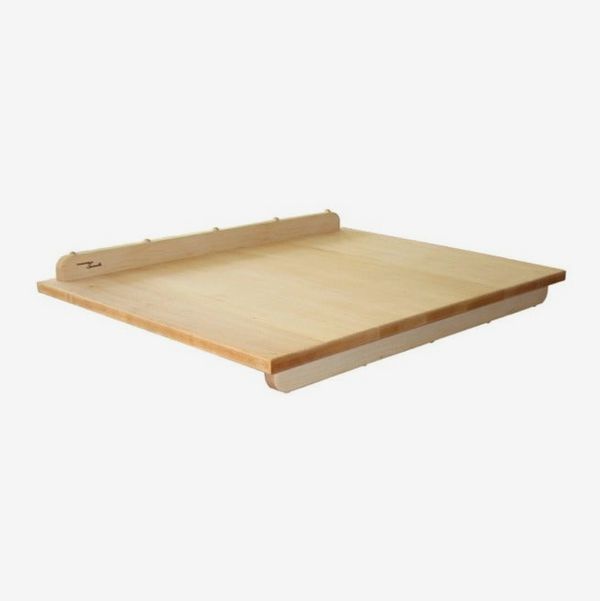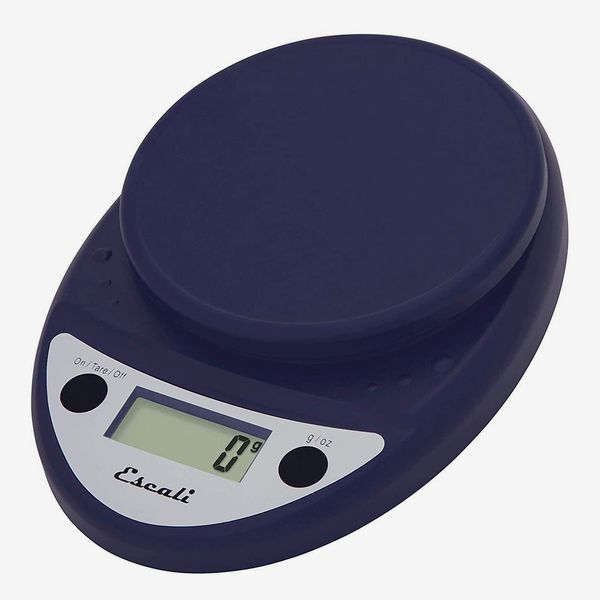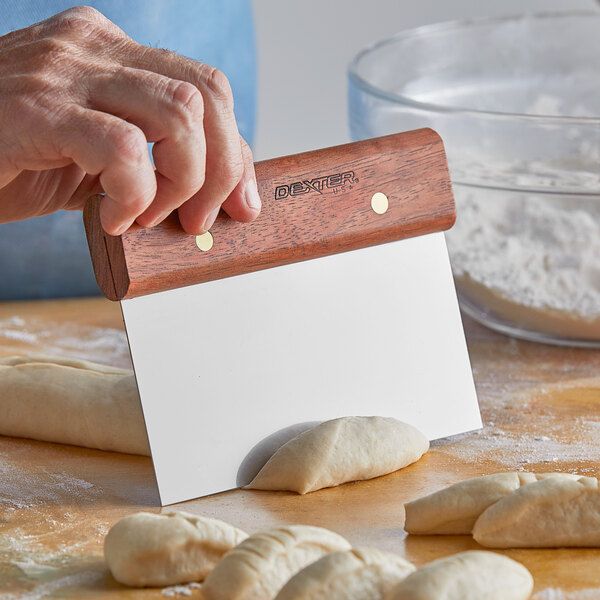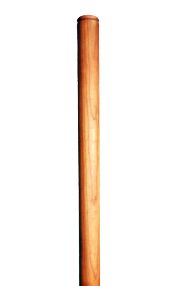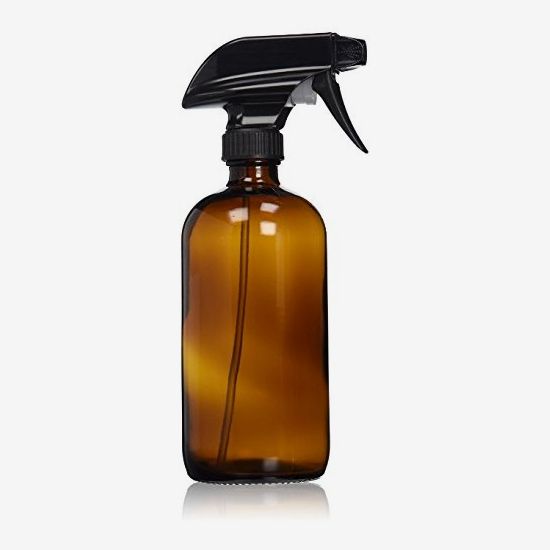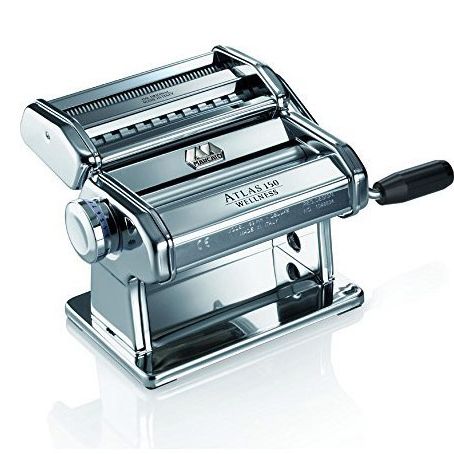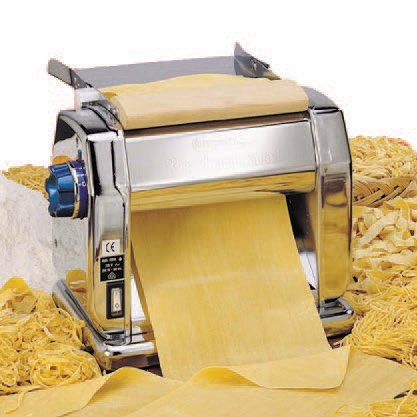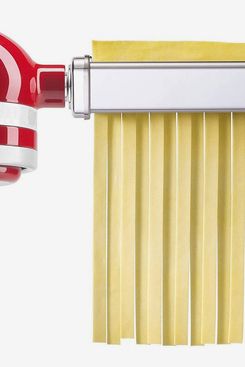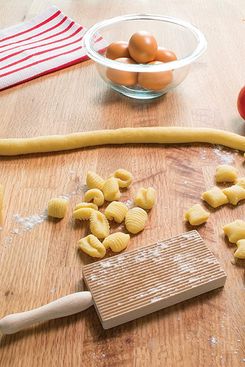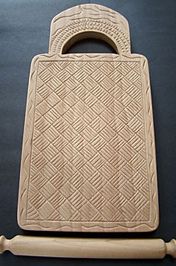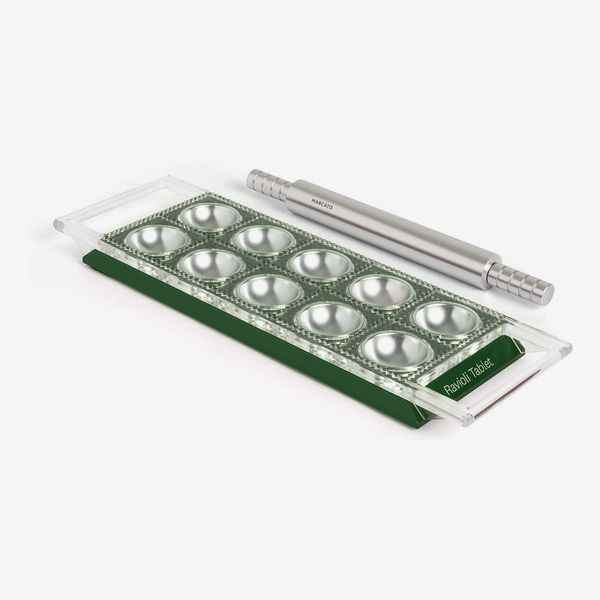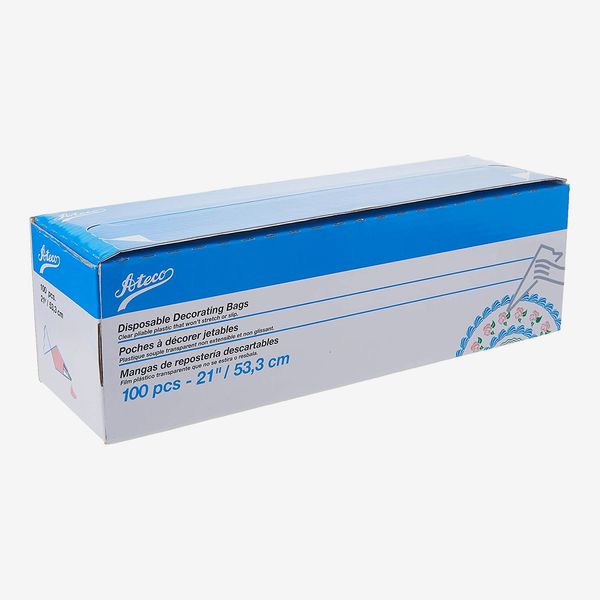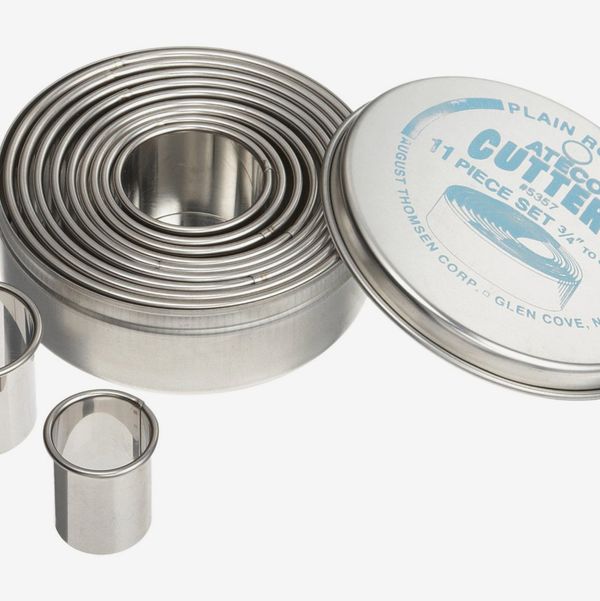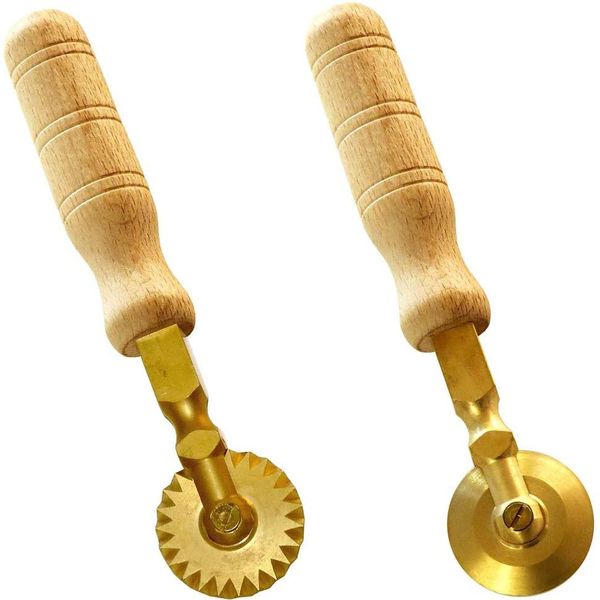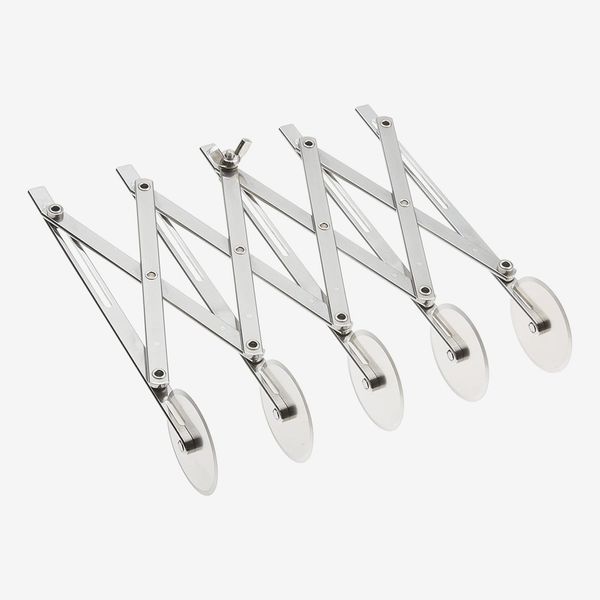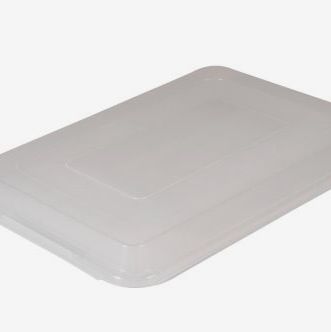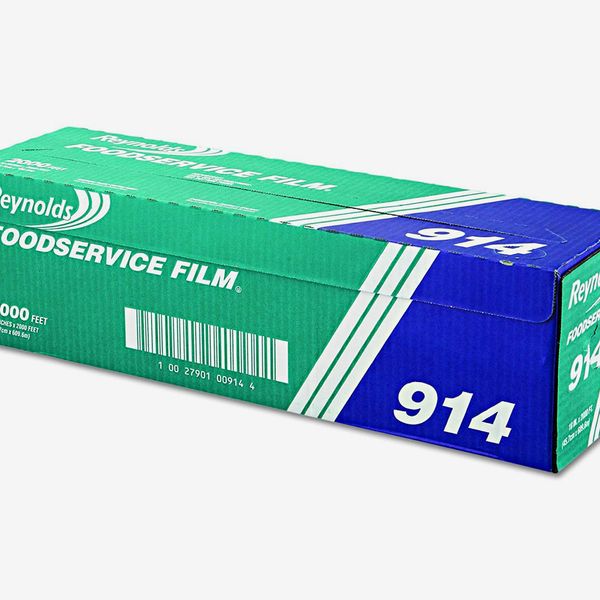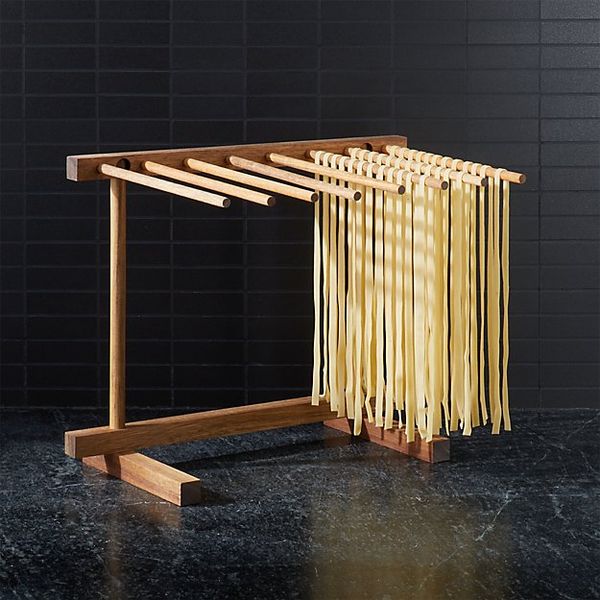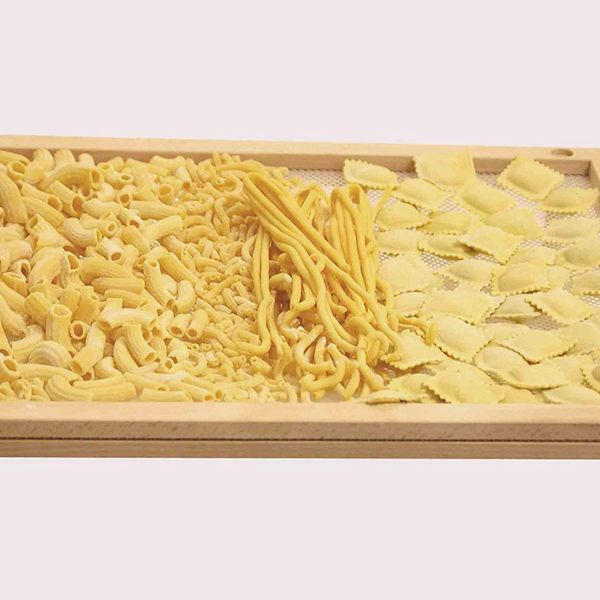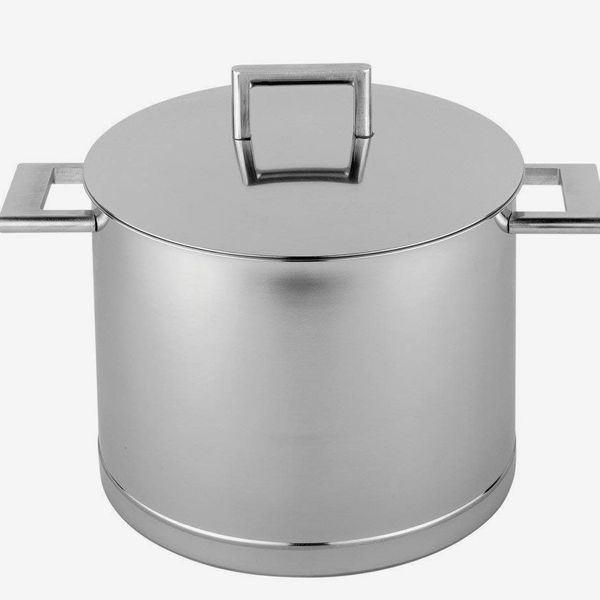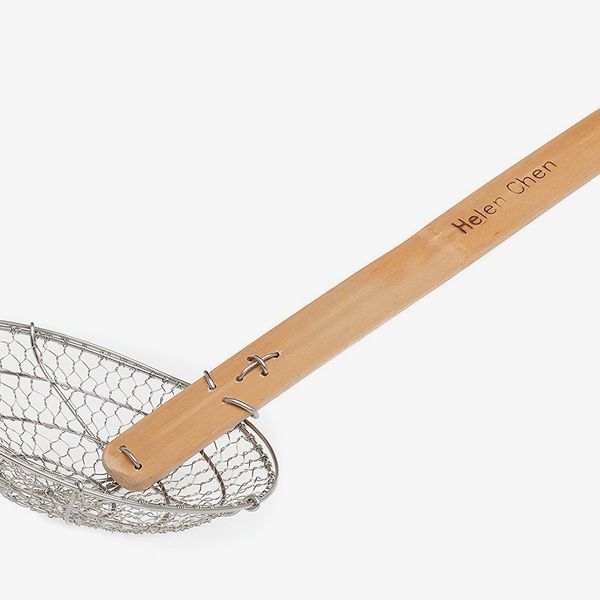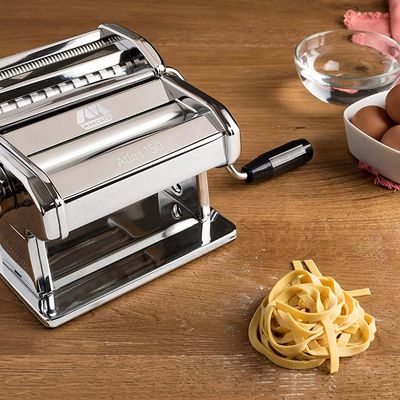
Making pasta at home is easier than you think. The dough itself comes together with a few ingredients that you’re likely to already have on hand. Other than that, all you need are tools. But narrowing down what to buy is the hardest part. Should you buy a hand-cranked pasta machine, or is it smarter to splurge on an electric model? Do you need a ravioli pin, or will a tablet suffice? What about a drying rack? To figure out which pasta-making tools you really need, we asked six pasta-makers and professional chefs to walk us through everything they use to cut, shape, and cook all sorts of freshly made pasta, from fettuccine to ravioli. And to help you find the tools you’re looking for, we’ve organized the products according to when you would use them in the pasta-making process, starting with tools for working with dough, followed by tools for making pasta, tools for drying and storing pasta, and tools for cooking it. (If you know what type of tool you’re after, simply click on any of the links above to jump straight to that section.)
Tools for working with dough
Wooden board
While you can roll out your pasta directly onto your counter, a wooden board or cutting board can be helpful as a work surface. “Unlike pie, biscuit, or croissant dough, pasta dough loves warmth — the warmth of your hands from kneading and the warmth of a wooden board,” says Domenica Marchetti, the author of The Glorious Pasta of Italy and the founder of Domenica Cooks. Meryl Feinstein, the founder of Pasta Social Club in Austin, adds, “Wood absorbs excess moisture, which helps with kneading and getting your dough to the right consistency. This is especially helpful if you make a Southern Italian–style dough with just flour and water.” Marchetti’s favorite wooden board is two-sided, and each side has a lip, which she says helps you position the board securely against a countertop so it stays put when you’re kneading or rolling dough. That board is currently sold out, but for those who like the sound of it and don’t want to wait for it to come back in stock, we found this option from Overstock that is double-sided and has a lip on both sides.
Kitchen scale
If you’re a beginner to pasta-making, Feinstein believes a kitchen scale is super-helpful. “Making dough is really more of an art than a science,” she says, “but until you’ve practiced a bunch and have a good idea of what your dough should look and feel like, you should start with precise weights.” Not only can measuring cups of flour differ greatly in weight from one cup to another but a standard large egg can weigh anywhere from 40 to 60 grams — a big difference when it comes to pasta. “Starting with workable ratios will make your life so much easier,” says Feinstein.
Bench scraper
Another must-have tool is a bench scraper, which can evenly divide dough and help mix ingredients. Ayinde “AJ” Sankofa, a co-founder and the executive chef of New Jersey–based pasta shop ESO Artisanal Pasta, says his absolute favorite is the Dexter-Russell bench scraper. He uses it every shift because it has a “very ergonomic and aesthetically pleasing handle and a consistently sharp stainless-steel cutter” that together allow him to “quickly plow through gnocchi and scrape up bits of dough that are stuck to my butcher block,” he says. He uses its “decently wide frame to transfer product from point A to point B with ease.”
Rolling pin
As opposed to a rolling pin made for baking, “this one is extra-long and handle free, which allows you to roll out large, thin sheets of pasta dough,” explains Marchetti. She loves that it’s available in maple, cherry, and walnut woods.
Spray bottle
According to chef Joe Sasto, “moisture management is critical for successful pasta-making,” which is why he suggests buying a set of these affordable glass spray bottles. A little water goes a long way, whether it’s getting the right consistency for your dough, keeping your pasta sheets from drying out as you work, or sealing your filled shapes. Sasto says a few spritzes from a spray bottle are usually all you need, and as long as you’re using small increments, you’ll never have to worry about oversaturating your dough.
Tools for making pasta
Hand-cranked pasta machine
For most people making fresh pasta at home, an electric pasta machine is overkill. But even if you’re getting a modest analog pasta-maker, it’s important to invest in the right one. Pasta machines are basically made of two rollers, which start at a wider width, then taper inward. “As you reduce the space in between them, that’s what makes the pasta sheet get thinner and thinner, and the calibration on those two rollers is very, very important,” explains Linda Miller Nicholson, the author of Pasta, Pretty Please and the “pasta artist” behind the Instagram account Salty Seattle. “Even if it’s a 64th of a millimeter off, you’ll have one side of the pasta sheet pulling and being a little bit more narrow, whereas the other side doesn’t grab it quite as much.” That will leave your pasta more prone to tearing, which will undo all your hard work. One brand that has very much solved this problem, according to Nicholson, is Marcato Atlas, an Italian company that has been making pasta machines since 1930. Marchetti is another fan of Atlas’s hand-cranked machine, telling us “it’s efficient and especially useful for people with repetitive-strain issues.” According to Marcato Atlas, the machine as is can make lasagna, fettuccine, and tagliolini (and you can buy accessories that let it do even more).
Electric pasta machine
If you do want to invest in an electric machine, Sankofa says this one is “durable and consistent.” And he would know: He says the Imperia is what they use at ESO to make fresh tagliatelle, telling us the machine can cut up to ten pounds of pasta per hour.
Electric pasta attachment
If you like the idea of an electric machine but don’t want to shell out so much money, consider the pasta attachments you can buy for your KitchenAid Stand Mixer. The catch, of course, is that you have to own the mixer, but if you do, Feinstein says, this is a nice option. “In all honesty, I use a manual one at home,” she says, “but this works well if you’re really looking for that efficiency.”
Gnocchi board
If you want to make textured pastas, you’ll need something with a ridged surface to roll the dough over. Marchetti says that in the Abruzzo region of Italy, where her family hails from, “pretty much every cook has a ‘rigagnocchi,’ or a textured board on which to roll and shape gnocchi.” Her favorite rigagnocchi is this one from Fante’s, which can also be used for making garganelli, a hand-formed pennelike pasta. Such a board gives whatever pasta you make on it a texture that “is perfect for catching sauce,” adds Feinstein.
Cavarola board
According to Marchetti, this larger cavarola board is used the same way as her favorite rigagnocchi board; it just has a crosshatch pattern instead of ridges. “Beyond shaping gnocchi and cavatelli, the cavarola can also be used to make pretty patterned sheets of pasta that can be used for lasagna, ravioli, or noodles,” she explains. The board’s designer, Terry Mirri, was one of the first to produce artisan-made pasta tools in the U.S., Marchetti adds.
Ravioli tray
If you have your heart set on mastering ravioli, Nicholson recommends this tray, which is easier to use than a ravioli pin and creates less waste. “The ravioli tablet actually has the perforations on an overlay,” she says. “You roll a pin over, and the pin, in conjunction with those perforations, actually cuts the ravioli in one movement, rather than having a step to cut afterward.” Feinstein adds that if you don’t want to spend money on a ravioli tray, you can use a cookie cutter or a fluted cutter to make square ravioli (more on that below).
Piping bags
You can use spoons to make filled pasta, but a piping bag will help you work much more evenly and efficiently. “For pasta, you don’t need the tip attachments,” says Feinstein. “Just cut the corner off.” If you prefer a reusable bag, we recommend this one, which comes in multiple sizes.
Round stainless-steel cutters
These round stainless-steel cutters are great for making tortellini and cappelletti — pasta shapes that start with circular pieces of dough that are then shaped. But Nicholson says they’re just nice to have in the kitchen: “You can use them for everything — biscuits and cookies and pasta and making funny Halloween shapes of things for my kids. They come in very handy.”
Rolling cutters
Another pasta-making tool that’s worth investing in is a rolling cutter. “You wind up using them so much that you don’t want the cheapo, stainless-steel ones,” says Nicholson. Also, because those lesser-quality ones are “not ergonomically comfortable, they don’t have the ability to cut nearly as well.” That’s why she likes this brass one with a wooden handle, which is heavy enough to smoothly and evenly slice through dough without tweaking your hand unnecessarily. Thomas McNaughton, the author of Flour + Water: Pasta, calls this rolling cutter “a must” and recommends applying mineral oil to the handle as soon as you get it to help prolong its life; he says this tool can last for generations.
Pasta bike
If you want a bunch of even strips or squares of pasta, this funny-looking gadget will get the job done very efficiently. “There are a lot of flimsy models out there,” says Feinstein, “but this one is super-sturdy, stays tight as you work, and is easy to adjust. I’ve had mine for several years.”
Tools for storing and drying pasta
Sheet pans and covers
Once your pasta is cut and shaped, you need a place to store it or let it dry out a bit, especially if you’re not eating it all at once. And the easiest way to do this is to lay out your pasta on a sheet pan. Whether you use these or any other style, she recommends having separate sheet pans for pasta-making so you don’t risk warping them by putting them in the oven. And Feinstein adds that using generous amounts of semolina on a sheet pan is a good way to prevent sticking.
You may want to consider buying a lid for your sheet pan, which makes it easier to store fresh pasta in the fridge or take it on the road if you’re traveling to someone else’s house for dinner. Just be sure to buy a lid integrated with the pan from the same brand; otherwise, it may not fit. This one is made to top the half-size sheet pans above.
Plastic wrap
“I feel very strongly about plastic wrap,” says Nicholson — so much so that she keeps an 18-inch roll of the stuff mounted underneath her kitchen cabinets for ease of use. When you’re making pasta, you’re using a lot of plastic wrap to keep fresh dough from drying out. “You’re always pulling it down, your hands are floury, so trying to get out a little tiny box and finagle and work with the box while you’re, you know, in the middle of needing an extra pair of hands anyway is not a pleasant thing.” The reason Nicholson likes this 18-inch-wide plastic wrap is because it’s the same width as her half-sheet pans. “So when you’re talking about a half-pan, you can go across the short direction of a half-pan.” Feinstein adds that you’ll need plastic wrap to encase your dough when it rests before you roll it out.
Drying rack
While you may not need a drying rack if you have a sheet pan, Nicholson explains the virtue of having both: “Even if I’m ultimately going to nest pastas, meaning wrap them into the little coils and set them on a drying tray or sheet pan, I still tend to hang them for a few minutes just so they can develop a little bit of a skin on the exterior so that when I nest them, they don’t stick together.” As for what she hangs on her rack, that would be “long-noodled pastas like fettuccine, tagliatelle, lasagna, pappardelle.”
Stackable drying tray with net
Although drying pasta and letting it rest on a sheet pan is more than sufficient for most types, Nicholson says filled pastas like ravioli and other delicate shapes may be better placed on a food-drying tray with a net. “Even if you’re lining the sheet pan with parchment and sprinkling it with semolina, if you’re working slow and you have it out at room temperature, filled pasta will still occasionally stick to the parchment,” she explains. “These airy drying racks circulate airflow beneath, and they’re very handy for room-temperature drying over a period of time — say, like an hour, hour and a half.” This dryer is also nice for a little nest of tagliatelle, Nicholson adds, since the airflow ensures that “it doesn’t clump down there on the bottom like it would with a sheet pan.”
Tools for cooking pasta
Stockpot
After your pasta has dried for a bit, it’s time to cook it. For that task, Nicholson likes this stockpot from Demeyere. “It’s extremely even, and it cooks really well,” she says. “Also, I cook on induction, so it’s important to me, obviously, that something is magnetic.” But if you don’t want to spend more than $400 on a stockpot (or don’t care about having induction-friendly cookware), she says any 8.5- or eight-quart stockpot you have on hand will do.
Spider strainer
Nicholson uses one of these spider strainers to drop pasta into her stockpot full of (salted!) boiling water and to gently remove it once it’s done. According to her, using this tool is easier than trying to dump out a gallon of hot water into a colander and less violent than pulling out a strainer from a dual-immersive stockpot, which can be hard on the pasta. “It’s funny, whenever I teach workshops, I realize that I touch the pasta like it’s a baby. I’m gentle with it,” says Nicholson. “You put so much work into it, and you want the end result to really be the very best it can be.”
The Strategist is designed to surface the most useful, expert recommendations for things to buy across the vast e-commerce landscape. Some of our latest conquests include the best acne treatments, rolling luggage, pillows for side sleepers, natural anxiety remedies, and bath towels. We update links when possible, but note that deals can expire and all prices are subject to change.
Every editorial product is independently selected. If you buy something through our links, New York may earn an affiliate commission.
